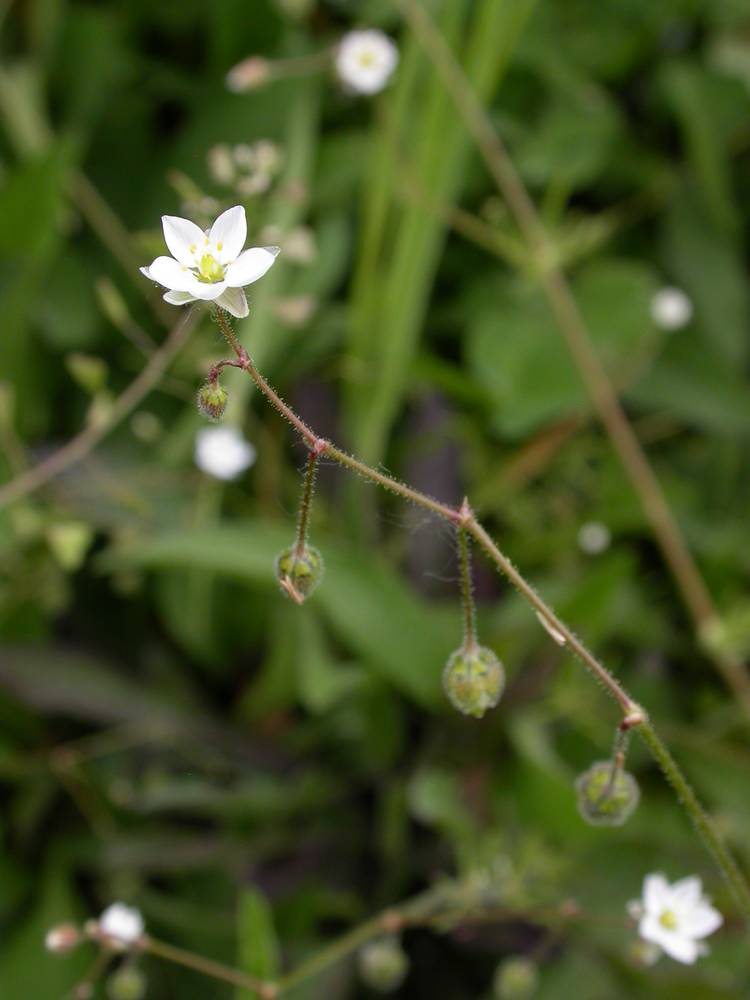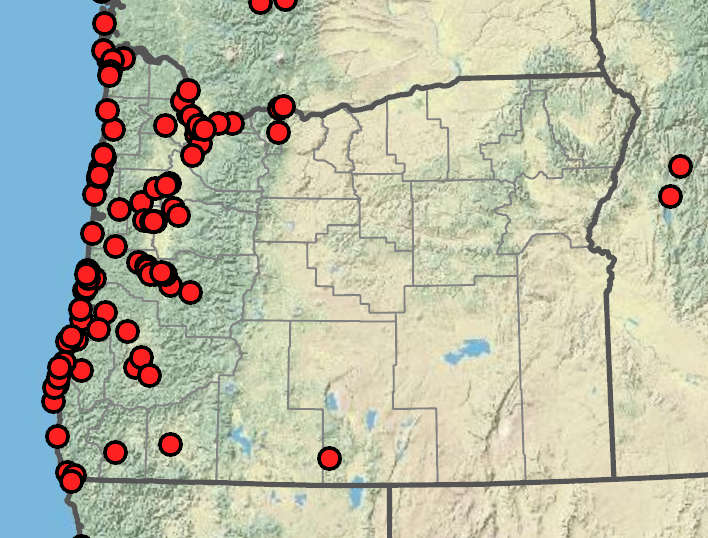Spergula arvensis
Caryophyllaceae
corn spurrey, stickwort
pink family
10–40+ cm, often branched at base, glabrous or usually glandular-hairy.
erect to prostrate.
1–5 cm;
margins often strongly revolute.
opposite, pseudoverticillate, whorled, or rarely alternate; simple;
petioles often present;
stipules present or 0.
bracts often purplish;
pedicels erect to ascending in flower, spreading to reflexed in fruit.
terminal or axillary cymes; thyrses, or capitula, or flowers 1;
bracts foliaceous, scarious, or absent;
involucel bracts (epicalyx) immediately subtending calyx occasionally present.
sepals elliptic to ovate, 2.5–5 mm;
petals elliptic to ovate, 2.5–4 mm.
bisexual or occasionally unisexual; radial; hypanthium; when present, urceolate; cup-, disk-, or dish-shaped, sometimes abruptly expanded distally;
sepals 4 or 5; distinct or connate basally or into a cup or tube;
petals (0)4 or 5; distinct;
stamens 1–10; in 1 or 2 whorls, arising from base of ovary, nectariferous disk or hypanthium rim;
staminodes usually 0 or 1–10;
pistils 1;
ovaries superior, 1-locular or rarely 2-locular proximally or 3–5 locular; placentas free-central;
basal, or axile in proximal half;
styles 1–5(6); distinct or connate proximally;
stigmas 2–5(6), often linear along adaxial surface of styles (or branches).
capsules or utricles; carpophore sometimes present.
1–150(500), often laterally compressed, brown or black.
=18, 36.
Spergula arvensis
Caryophyllaceae
Disturbed areas, cultivated fields, open fields, beaches. Flowering Apr–Jun. 0–400 m. Casc, CR, ECas, Est, Sisk, WV. CA, ID, WA; scattered throughout much of northern North America; worldwide. Exotic.
Worldwide, especially in the Mediterranean region and North Temperate Zone. ~100 genera; 30 genera treated in Flora.
Caryophyllaceae has traditionally been divided into three subfamilies: Paronychioideae (stipules present, sepals distinct), Alsinoideae (stipules absent, sepals mostly distinct), and Caryophylloideae (stipules absent, sepals connate into a cup or tube). Recent molecular studies have shown this scheme does not reflect phylogeny within the family; recognition of at least ten tribes is more realistic (see Harbaugh et al. 2010). Besides the taxa described below, species in two additional genera have been collected on ballast. Myosoton aquaticum, a native of Europe and Asia, was collected on ballast near Portland in 1902. It is similar to Stellaria media but has minute glandular hairs on both the stems and calyces as well as 5–6 styles and a capsule opening by 5–6 bifid valves. It is known from a few localities in Washington, Idaho, and British Columbia. Paronychia franciscana, a native of Chile known from around San Francisco Bay, has been collected on four occasions in Oregon, twice on ballast near Portland, twice in Curry County in 1924 and 1926. This plant is most similar to Cardionema ramosissimum but has sepals with a shorter awn (less than 1 mm) that are not densely woolly.
Rich Rabeler, Ronald Hartman
- Local floras:
BC,
CA,
OR,
WA
- Local Web sites:
CalFlora,
CalPhotos,
Flora NW,
PNW Herbaria
WildflowerSearch
iNaturalist (observations)
USDA Plants Database
- LBJ Wildflower Center
- SEINet
- Plants of the World Online
- Encyclopedia of Life
- Wikipedia
- Google Image Search
- Local floras:
CA,
OR
- Local Web sites:
CalFlora,
CalPhotos,
Flora NW,
PNW Herbaria
WildflowerSearch
iNaturalist (observations)
- LBJ Wildflower Center
- SEINet
- Plants of the World Online
- Encyclopedia of Life
- Wikipedia
- Google Image Search



